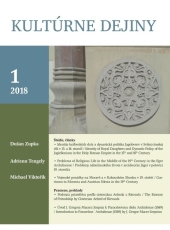Problémy náboženského života v arcidiecéze Jáger v polovici 19. storočia
Problems of Religious Life in the Middle of the 19th Century in the Eger Archdiocese
Author(s): Adrienn TengelySubject(s): History
Published by: VERBUM - vydavateľstvo Katolíckej univerzity v Ružomberku
Keywords: 19th Century; Catholic Church; Eger Archdiocese; religious life
Summary/Abstract: In the middle of the 19th century the piety of the upper and middle class separated sharply from the religious life of peasantry that included many medieval and baroque elements. In the period of the 1848 revolution, the clergy of Eger Archdiocese prepared plans for deepening the piety. According to clergy, the capital problems of the religious life were the breach of the church regulations, the religious fanaticism and the junketing related to the church feasts and pilgrimages.The above shown sources foreshadow that the picture of religiosity in the middle of the 19th century was not that schematic as it was supposed by the researches so far. Even in the middle of the 19th century the religiosity of the people could not be handled as a unified whole because there were clearly visible contrasts in the judgment and experiencing of religiosity: some people despised it on the basis of the example of the enlightened nobility and intellectuals and accordingly they did not keep the Church regulations at all or just in a small scale, while others, in contrast to this – despite the disapproval of the clergy – further insisted on the traditional religion practice forms. Accordingly, the break line of religious life “slipped down” by the end of the 1840s: the caesura did not extend between the lower and upper layers any more, but between the irreligious part of the people who were in minority yet – which is possible that meant the youth mainly – and the bigger group preserving the old type of religiosity further.
Journal: Kultúrne dejiny
- Issue Year: 9/2018
- Issue No: 1
- Page Range: 26-35
- Page Count: 10
- Language: English

